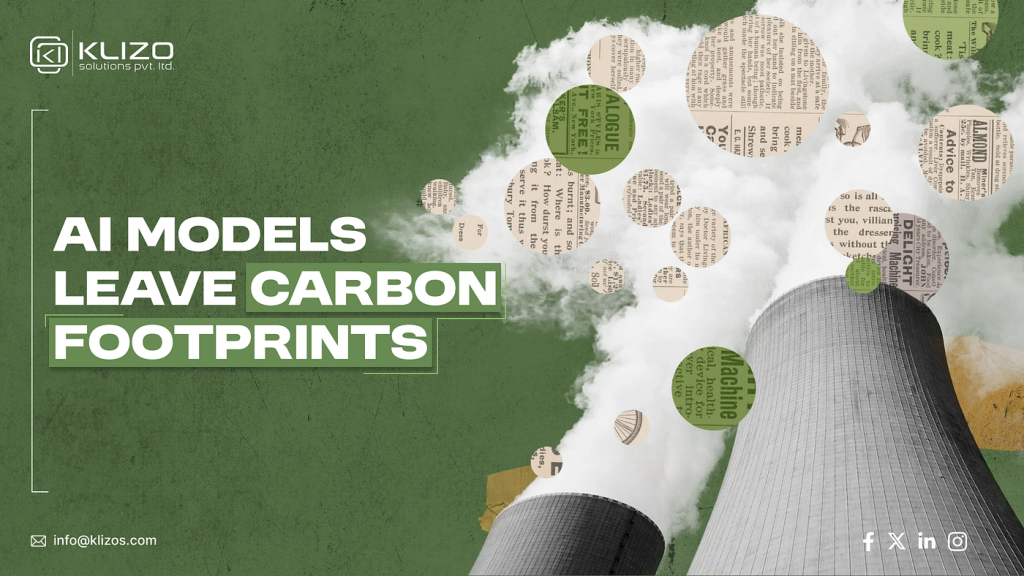Training a generative model is like lighting up an entire city for a festival. Strings of lights, towering installations and bright colours create a spectacular sight, but behind the glow is a silent draw on power that few pay attention to. Modern generative models follow a similar path. They illuminate industries with creativity and automation, yet each training run pulls heavily from global energy reserves. The environmental cost now demands attention as organisations look beyond performance benchmarks and begin asking what ecological shadow these models cast. As discussions expand and professionals explore specialised learning paths such as a gen AI course, awareness becomes an essential part of responsible innovation.
The Hidden Machinery Behind the Glow
Imagine a massive network of engines running in perfect synchrony. They hum, rotate, heat up and cool down in a nearly orchestrated rhythm. This is what happens inside data centres during generative model training. Thousands of GPUs operate at full throttle, creating an invisible engine room where power flows continuously to sustain the computational intensity.
Every time a model doubles in size or complexity, the power consumption spikes. The infrastructure that hosts these models behaves like a factory that never sleeps. Cooling units fight rising temperatures, backup systems remain alert and electrically dense processors push their limits. The result is a carbon footprint that rivals some industrial activities, even though all of it unfolds quietly behind metallic racks and fibre cables.
Where the Carbon Burden Comes From
Generative AI training accumulates emissions from several hidden layers. At the front is electricity consumption. When energy is sourced from fossil fuel dominated grids, it contributes directly to carbon output. A single large scale training cycle can run for weeks, drawing megawatt hours of continuous power. This is similar to a locomotive that keeps burning fuel as long as the journey continues.
Beyond electricity, hardware manufacturing adds another layer of impact. The creation of high end GPUs involves extracting rare minerals, forging components and shipping them across continents. Each step leaves a trail of emissions long before the GPU ever enters a server rack.
Even data plays a part. The more extensive the dataset, the greater the storage requirements and the longer the computation time. It becomes a chain reaction where every additional parameter or example increases the ecological weight carried through the system.
Strategies to Reduce the Ecological Load
Despite the rising environmental concerns, the industry is far from helpless. Several strategies can dramatically lower the carbon footprint of generative model development. One approach is model efficiency engineering. Developers are turning to sparse architectures, distillation and advanced pruning techniques to reduce computational needs without diminishing capability. Smaller models trained intelligently often match the performance of their heavier counterparts.
Energy sourcing also plays a critical role. Data centres powered by wind, solar or hydroelectric energy can drastically cut emissions. Some organisations now co-locate data centres near renewable energy sites to remove dependency on coal based grids.
Innovative scheduling has become another effective tool. Instead of running high load training cycles during peak grid usage hours, companies schedule heavy computation during periods when renewable energy availability is higher. This tactical shift reduces stress on the electrical grid and minimises associated carbon output.
The industry wide push for sustainability has encouraged learners and professionals to explore emerging pathways, which is why the relevance of a gen AI course often includes environmental consciousness as a core aspect of training.
The Promise of Carbon Aware Model Development
Carbon aware model development is a movement gaining momentum across research labs and AI enterprises. It treats carbon emissions as a measurable parameter just like accuracy or speed. Before training begins, teams calculate expected emissions, optimise architecture and review energy sourcing. This transforms model development from a purely performance driven pursuit to a balanced process that considers ecological well being.
Some organisations have started publishing carbon transparency reports for their models. These documents reveal the energy sources, training duration and emissions produced, enabling researchers and companies to compare ecological impacts alongside technical achievements. Over time, this practice is expected to become a standard feature of responsible AI development.
Another promising shift is the rise of collaborative training. Instead of each organisation building massive models from scratch, shared model ecosystems reduce redundant training cycles. When multiple teams build on a common foundation, the overall carbon load decreases.
Conclusion
Generative AI development has entered a stage where creativity needs to coexist with conscience. The industry can no longer measure progress solely through model size or benchmark scores. The carbon footprint of training has become a defining factor in how responsible innovation is evaluated. Treating these models like glowing festival cities rather than invisible engines brings clarity to the power they consume and the environmental story they create.
A future shaped by thoughtful model design, renewable energy adoption and carbon aware planning can ensure that technological brilliance does not come at nature’s expense. The journey ahead requires awareness, transparency and innovation that respects the limits of the planet, allowing generative AI to illuminate without overwhelming the world that sustains it.

